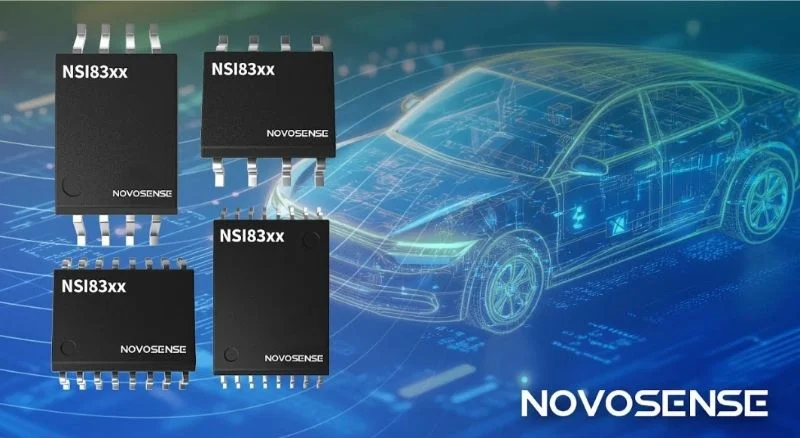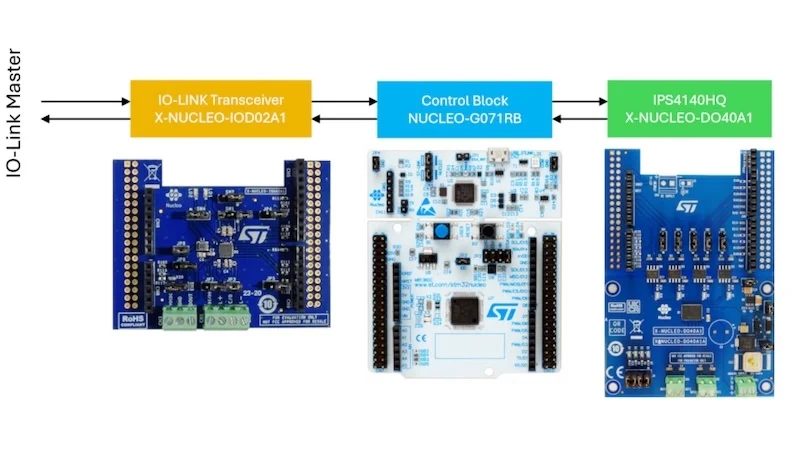The new processor reportedly offers 100x lower latency and 500x lower energy consumption than conventional AI processors.
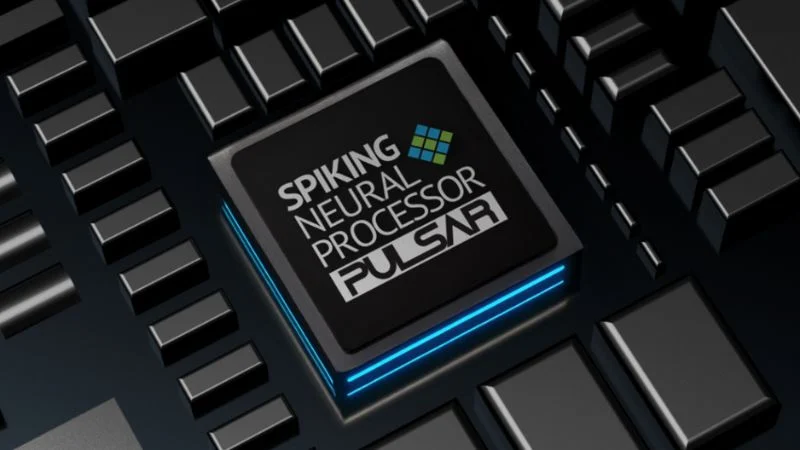
Innatera claims that Pulsar is the "first commercially available, brain-inspired microcontroller for sensing at the edge." Image used courtesy of Innatera
Pulsar: A Flexible Spiking Neural Processor
Pulsar's underlying architecture integrates a fully programmable spiking neural network (SNN) fabric, optimized for asynchronous, sparse data computation. To this end, Pulsar offers a heterogeneous computing architecture that separates SNN, CNN, and traditional CPU tasks to optimize workload partitioning.
Innatera designed the processor to be flexible, supporting neuron and synapse-level parameterization across diverse network topologies to specifically fit the needs of spatiotemporal workloads such as audio and vibration sensing. To support hybrid workloads, the SNN fabric operates alongside a 32-bit RISC-V CPU with floating point support and a 32-MAC CNN accelerator. An FFT/IFFT engine provides additional compute capability for time-frequency domain applications.
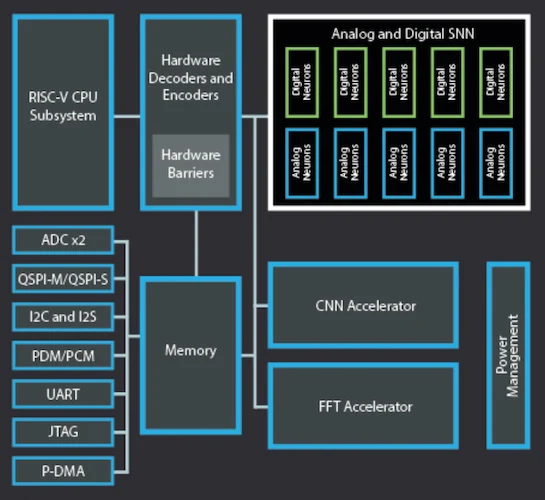
Pulsar block diagram. Image used courtesy of Innatera
The processor’s memory subsystem includes 384 KB of general SRAM, 128 KB dedicated to CNN computation, and 32 KB of retention SRAM to preserve application state through low-power transitions. Integrated peripheral support includes I2C, UART, SPI, JTAG, ADCs, camera interfaces, and GPIO, backed by scatter-gather DMA engines to facilitate spike data handling.
From a power perspective, the system uses an internal low-power PLL and software-controlled voltage domains to reduce dynamic and standby power consumption. Multiple sleep modes further optimize energy draw during idle periods. Altogether, Innatera claims the processor offers 500x lower energy consumption than conventional AI processors.
On the software end, Pulsar is supported by the Talamo SDK, which integrates PyTorch-based model training with direct hardware mapping. Developers can deploy models using Python-native compilers or standard GCC toolchains for RISC-V.
A Move to Neuromorphic
Traditional edge AI systems rely on synchronous, frame-based processing, which requires frequent sensor polling and high memory bandwidth even in the absence of meaningful signal changes. This approach leads to inefficient energy use and scalability issues when applied to low-power or always-on applications.
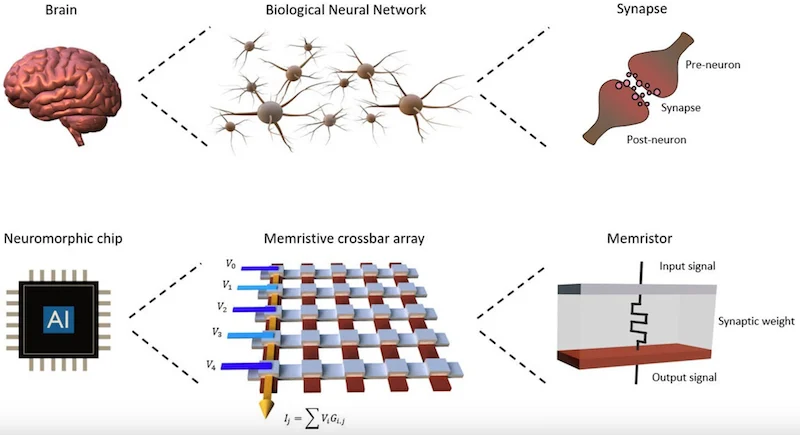
Mimicking the human brain with a neuromorphic chip. Image used courtesy of Taylor & Francis Online
In contrast, neuromorphic systems mimic biological neurons to operate in an event-driven manner. Signals are encoded as sparse, asynchronous spikes that trigger computation only when a relevant event occurs. This model aligns naturally with the dynamics of real-world signals such as acoustic patterns and gesture changes. By avoiding unnecessary computation and memory access, neuromorphic processors can sustain milliwatt-level power budgets while preserving responsiveness.
Neuromorphic signal processors are also temporally sensitive, making them especially effective in applications involving transient signals, streaming data like radar chirps or vibration profiles. Their architectures support in-memory compute and local learning rules, which minimize latency and reduce reliance on cloud inference or centralized training workflows.
Shaping Edge AI Through Context-Aware Computation
Innatera’s introduction of a commercially viable neuromorphic MCU is a major boon to edge AI processing. As AI continues to migrate closer to the sensor, demand will grow for processors that can interpret ambient information without the overhead of continuous polling or cloud dependence. Innatera's Pulsar MCU is now available for purchase.


